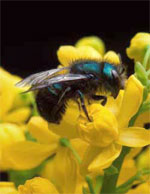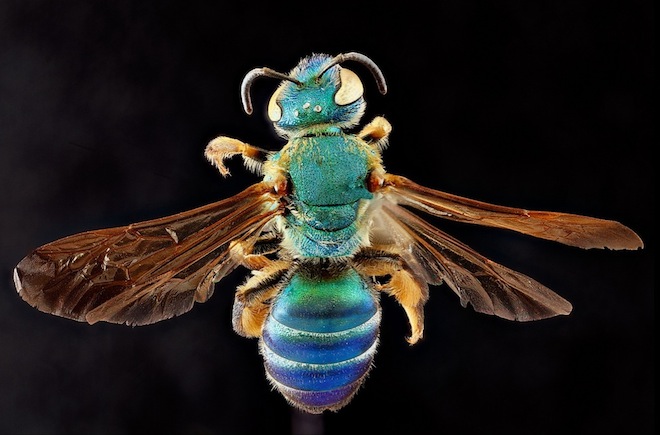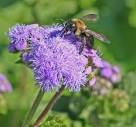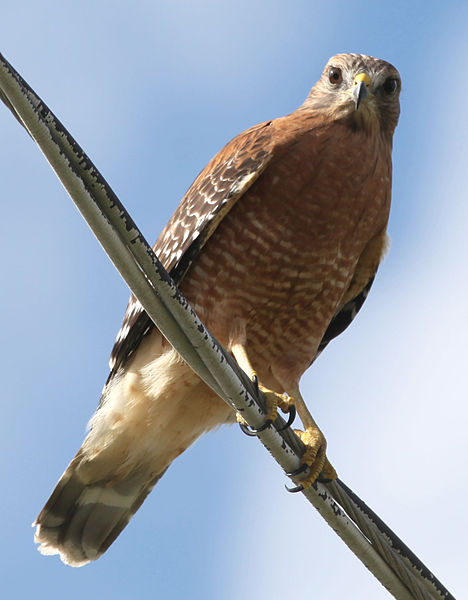Yesterday I did my part for Save the Bees: I rescued one bee. Just one, at no risk to anything other than my sense of propriety (whatever that is!).
Sitting at a two-top by a window, waiting for my sister to join me for lunch, I noticed a solitary honeybee caught against the window, gently hitting the glass over & over in her effort to be back outside. Realising I’d only scare her, and probably get stung in the process (which would be not only uncomfortable, but fatal to the poor bee!), I took my journal and began to shoo her gently towards the door, several feet down the wall of glass.
I got her from one window bay to the next, then the next, then back one… I suspect the people behind me were watching me, but I was focused on the bee. The cashier by the door was obviously watching, however, and came to hold the door open. Together? Success! Exeunt one honeybee!
As anyone who knows me well will tell you, I love bees. Mason bees,  bobbing bumble bees, tiny sweat bees, all the native bees most folks don’t know (there are green bees, folks!), and of course honey bees. They seem to know I like them, and sometimes will light on my arm and walk across it, as if I should be a flower.
bobbing bumble bees, tiny sweat bees, all the native bees most folks don’t know (there are green bees, folks!), and of course honey bees. They seem to know I like them, and sometimes will light on my arm and walk across it, as if I should be a flower.
Sometimes they’ll let me creep up on them at the bird bath, where I watch in awe as the long bee tongue sucks up the water they need every day (litres in the summer, to cool the hive). I still dream of a hive, but given my neighbours on one side, and our uncertain permanence in this house, I’m contenting myself with carpenter bee houses. My sister gave me one for Christmas — they last 2-3 years before you have to pitch them — and I bought another one this spring.
 Mason bees are pretty great, actually. Solitary dweller — no hive for them. But great pollinators, as are all bees. Critical for the landscape, not simply the edible one that’s come to the attention of the news, in the wake of colony collapse disorder. Apples, the entire California almond crop (most of the world’s almonds, that); most berries; stone fruit like peaches and plums; veggies like broccoli, carrots, & cauliflower; sugar beets (where we get much of our sugar in the US); peanuts…soybeans… The list is long and frightening.
Mason bees are pretty great, actually. Solitary dweller — no hive for them. But great pollinators, as are all bees. Critical for the landscape, not simply the edible one that’s come to the attention of the news, in the wake of colony collapse disorder. Apples, the entire California almond crop (most of the world’s almonds, that); most berries; stone fruit like peaches and plums; veggies like broccoli, carrots, & cauliflower; sugar beets (where we get much of our sugar in the US); peanuts…soybeans… The list is long and frightening.
But the wild landscape — and our urban one — would be the bleaker without bees, as well. Wild bees do much to pollinate trees, wildflowers, grasses… Another long & lovely list.
In all fairness, I do more than just shoo bees outdoors when they’re stuck inside. I plant bee friendly plants (butterflies like them too, but bees sometimes can work the long tubular flowers that butterflies can). I make sure there are shallow water sources. I try hard to remind people that bees are critical to our everyday lives. The Buddhist in me believes the bees have the same rights to life all beings do — not a belief shared by many, I acknowledge.
But something there is in me that loves bees… Since I was a child, reading French entymologist Jean-Henri Fabre.

And yes, I was that geeky. Even then I wanted a beehive of my own. My own fuzzy yellow & black or brown bees. And who knew, back then, that there were green bees, blue bees, turquoise, & gold bees?
They’re magic, of course, too. 🙂 In very olden days, bees on the farm were to be told all news — good, bad, gossip. I talk to the ones at our house, too, even though they’re not ‘my’ bees. I prattle about the weather, the flowers, the state of agribusinesses that would rather fund a robotic bee than work with the ones we have. How they turn sunlight into honey, with just hard work and wings…
 Mostly, though? I enjoy them. They’re the best way to exercise complete mindfulness. Just watching a bee working a patch of ageratum… Makes my brain push alpha waves just thinking about it…
Mostly, though? I enjoy them. They’re the best way to exercise complete mindfulness. Just watching a bee working a patch of ageratum… Makes my brain push alpha waves just thinking about it…

